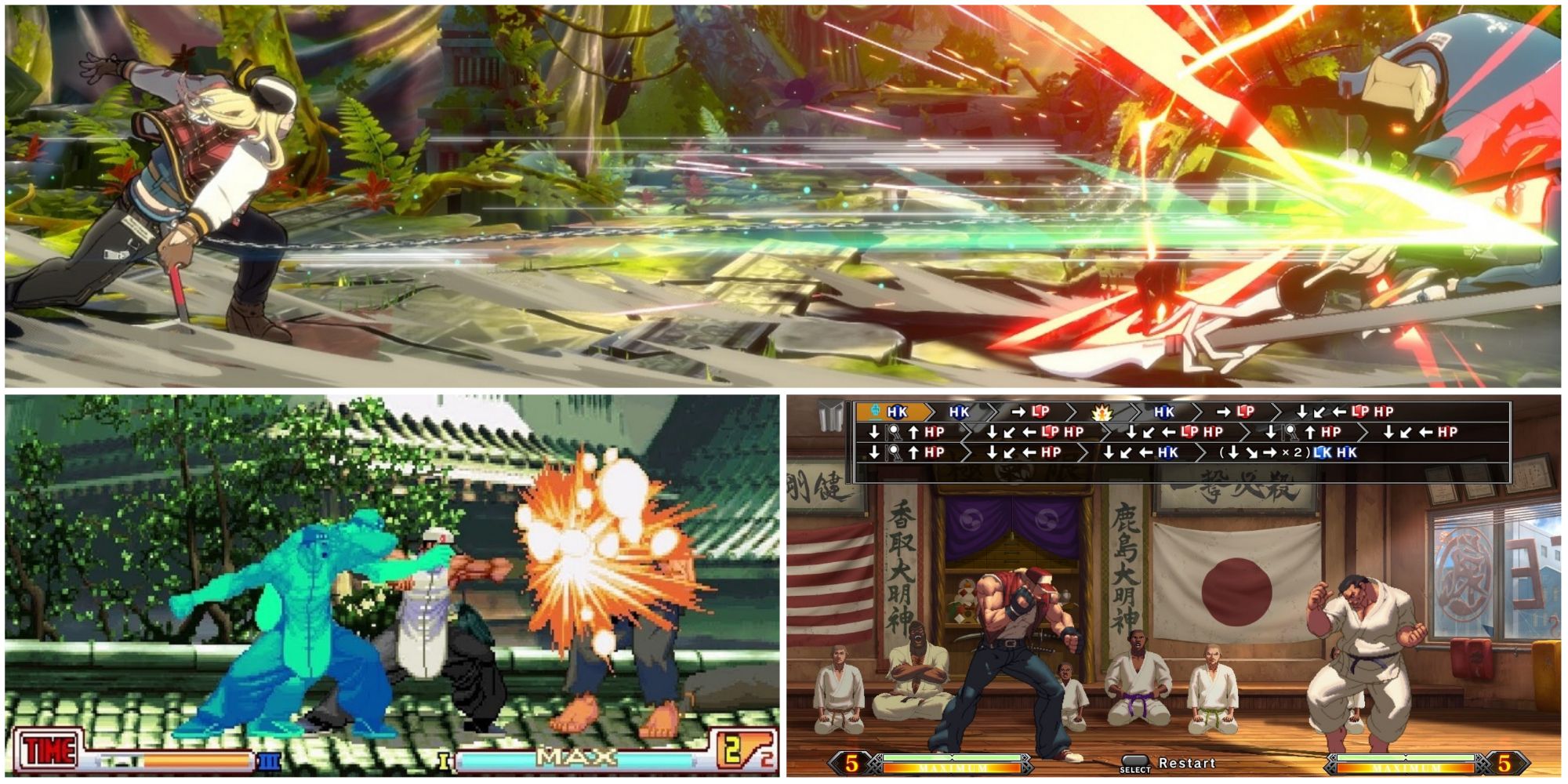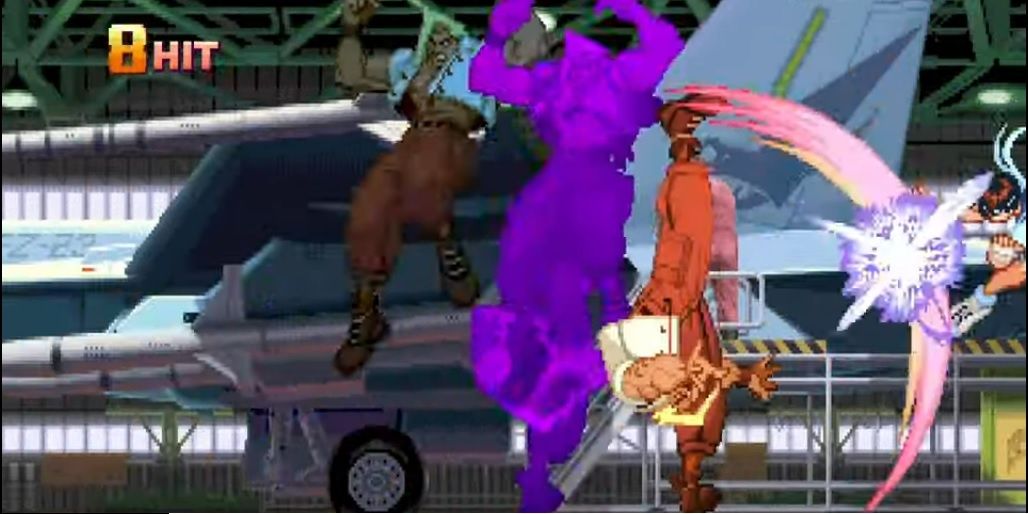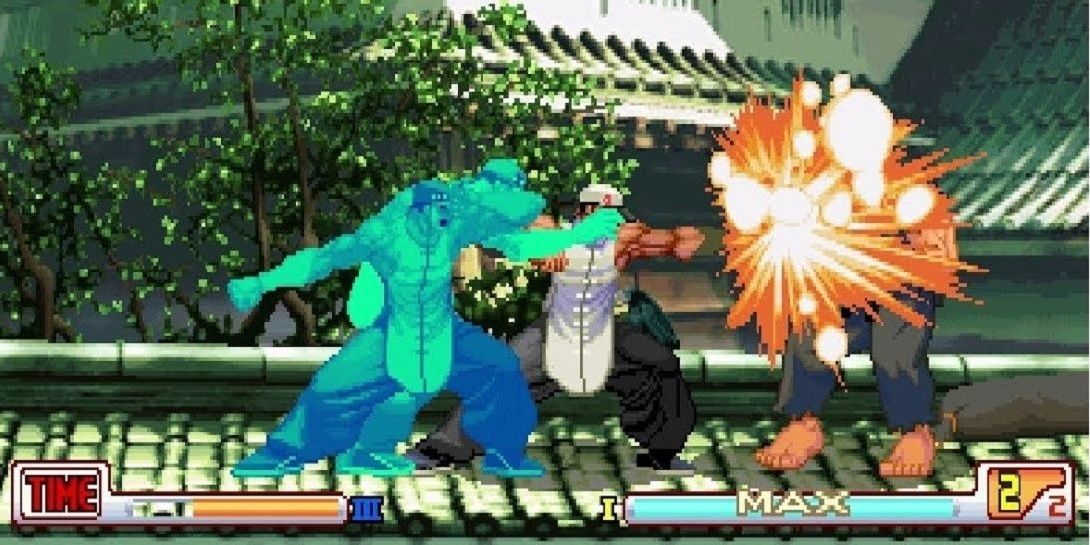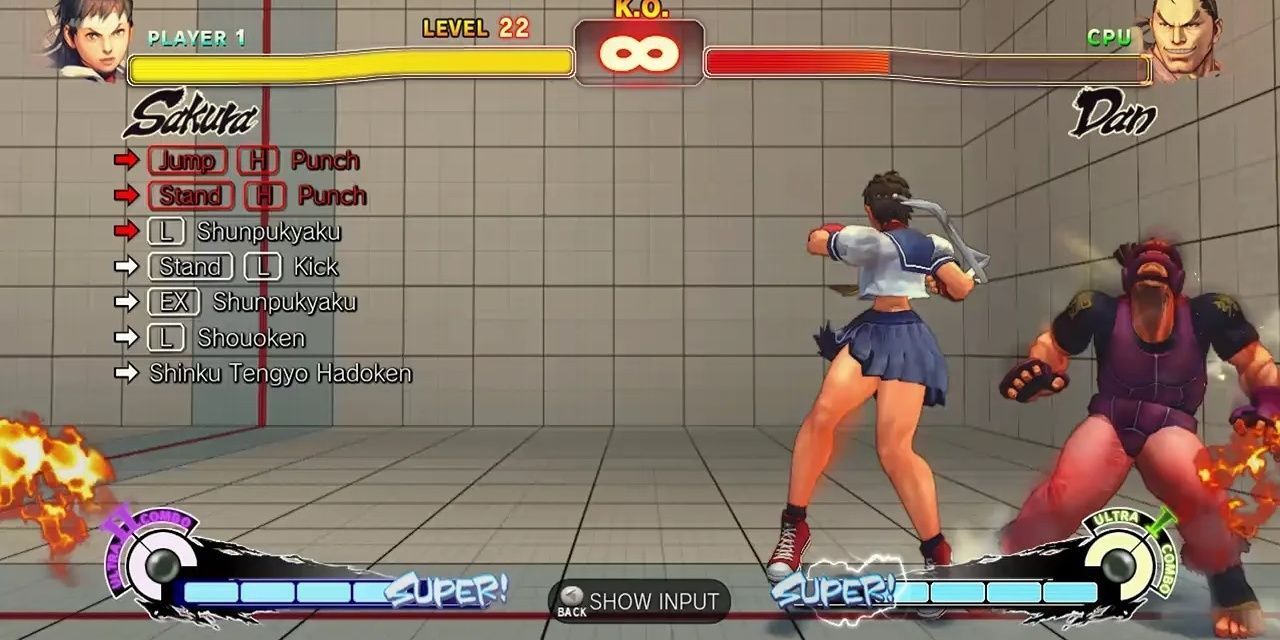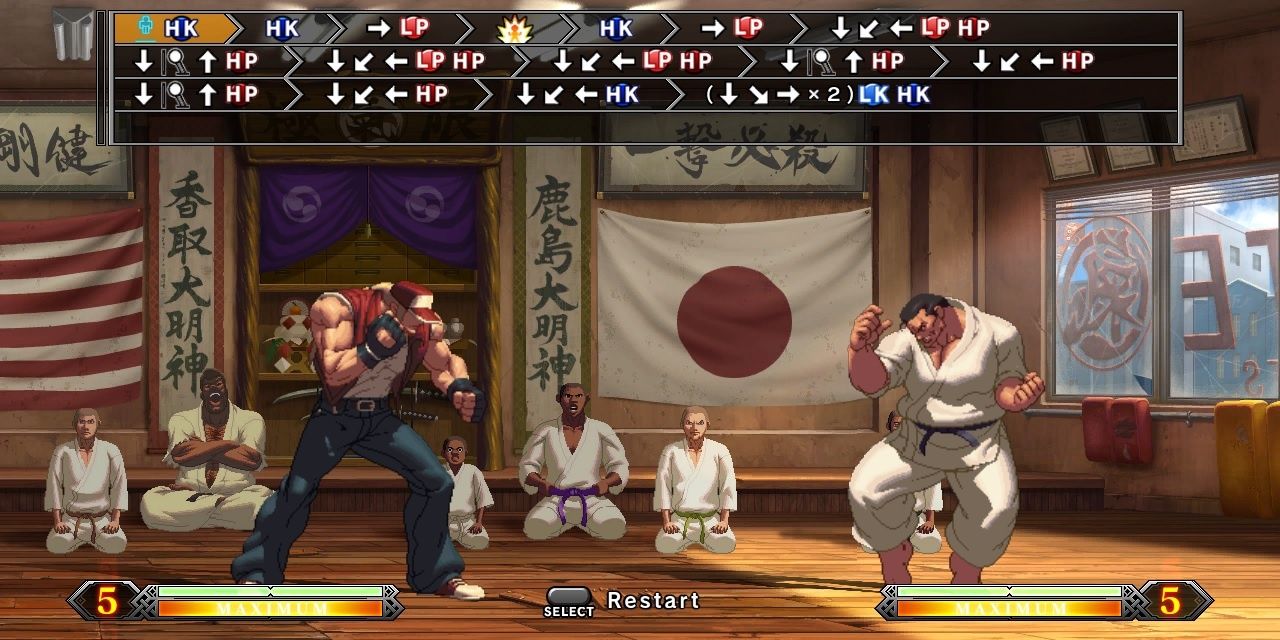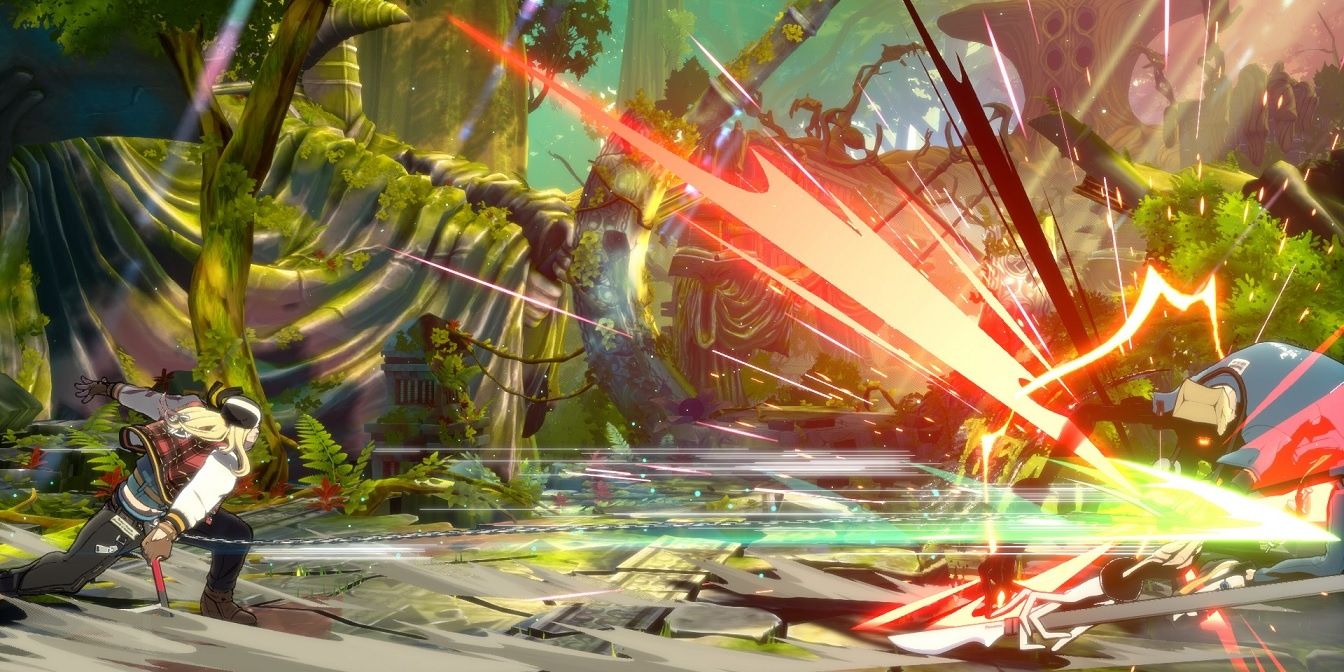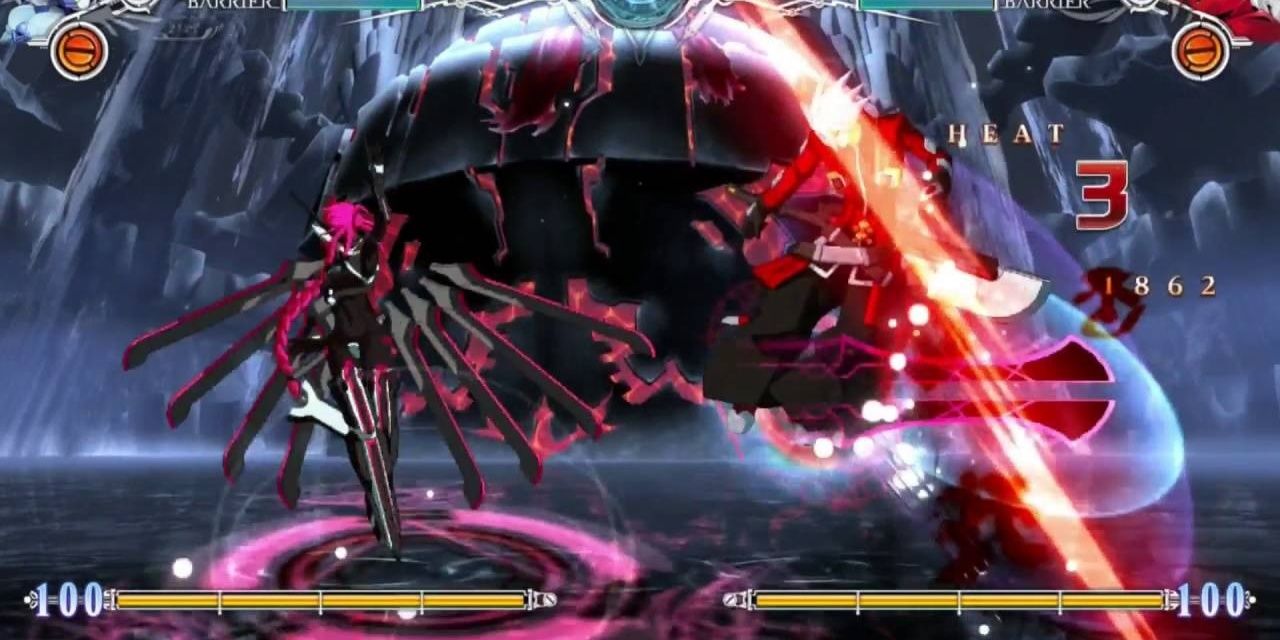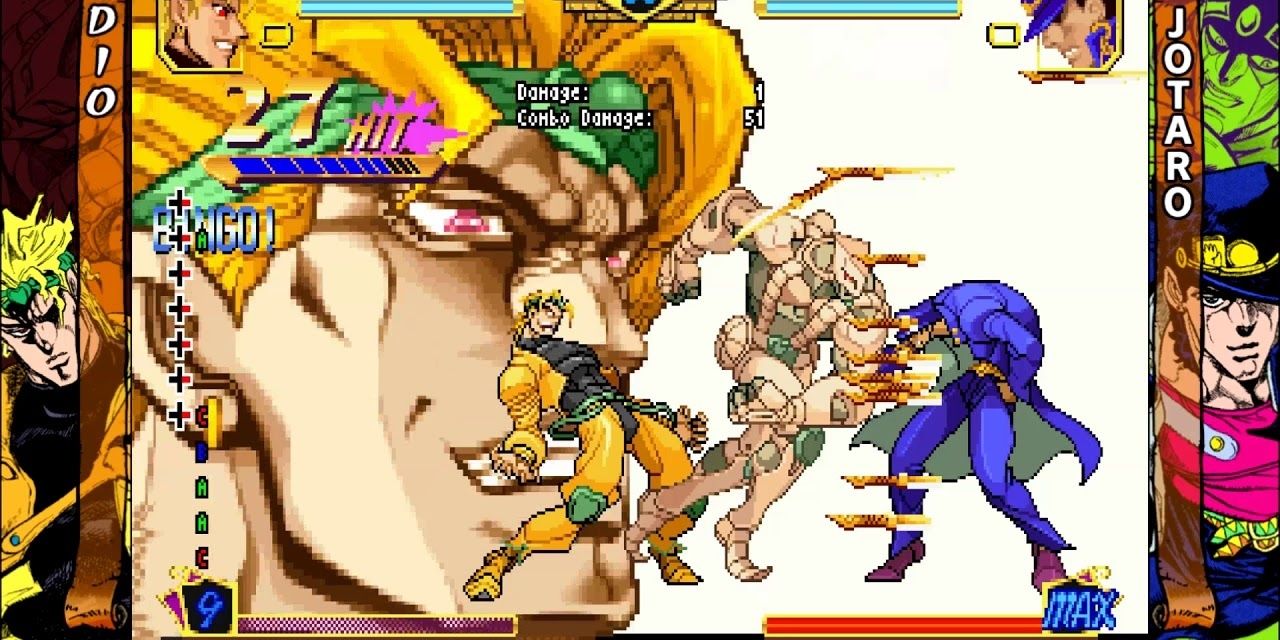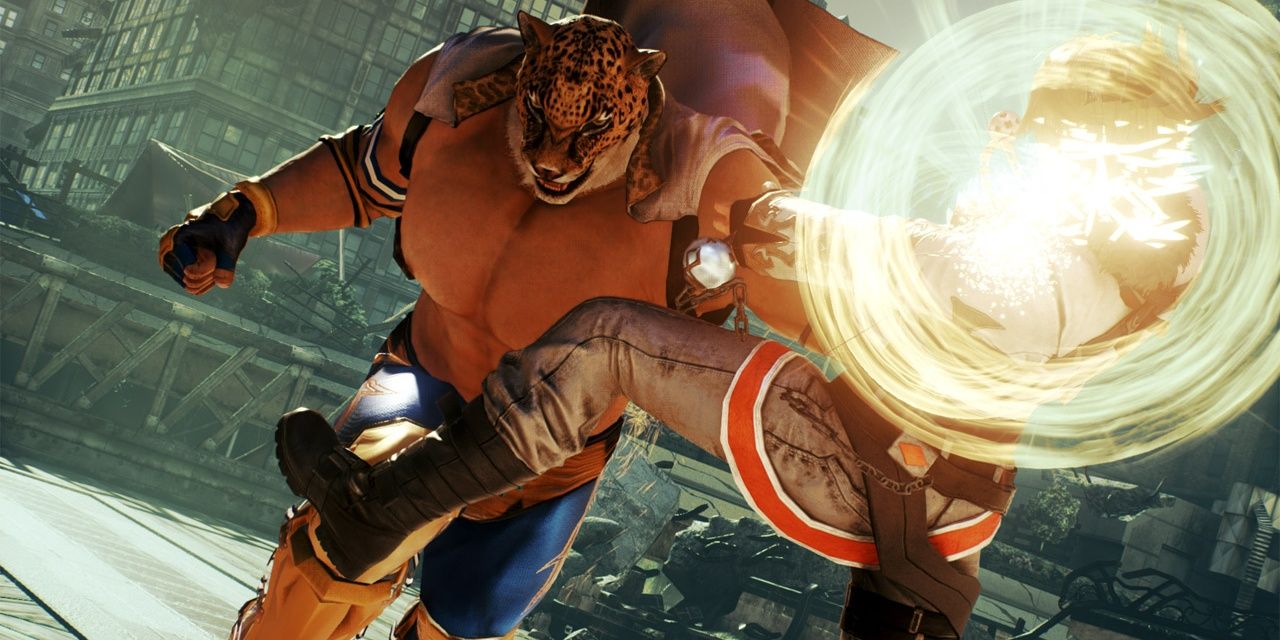Fighting games can be hard to get into. If trying to get the single-player stuff done against the AI wasn’t tricky enough, the online mode can be unforgiving. There’s only so much a casual player can do against people who have been playing these games for decades.
Those casuals could "git gud" and learn the combos. Except not every combo is as simple as "low mid-kick to fireball" or "square, square, triangle." Depending on the game, the only way to get ahead involves mastering a bunch of difficult techniques. Here are some fighting games that require a lot of work to produce the best combos.
8 Street Fighter Alpha 3
The third and most popular Alpha game is actually quite broken compared to its predecessors. It’s just that it takes a lot of practice to truly snap it in half. For example, V-Ism lets characters like Guy, Rolento, and Blanka trap opponents in unblockable Custom Combos. But it requires knowing the right mix of overhead, mid, and low attacks done with the right timing really quickly over and over.
Crouch Canceling is another matter. This technique will allow players to infinitely juggle their opponents to death. Albeit very, very slowly as the damage gets scaled lower the longer a combo goes on for. It requires jumping out of a crouch at the right point every time to keep hitting the opponent in midair. Mess up once, and they’ll fall back down to earth.
7 Street Fighter 3: Third Strike
Street Fighter 3 got rid of Alpha’s gimmicks like midair blocking and Alpha Counters. But it wasn’t any easier. For example, some combos in Third Strike require using EX moves, which are souped-up versions of special moves like the Hadōken. But they share the same meter as the Super Arts. If they pick the wrong one, they’ll drain that gauge before they can do a thing. That’s without getting into the characters themselves.
Mastering Urien means knowing how to charge his attacks, and how to place his Aegis Reflector Super Art just right. Makoto’s moves are designed for specific setups, like knowing how to juggle after her Abare Tosanami super. While Yun's top-tier position relies on knowing how to make combos with his Genei Jin super. If players can’t tell their Daipan Loops from their Keeper Jins, they’re better off sticking with simpler characters like Ken or Chun Li.
6 Ultra Street Fighter 4
Its long-awaited sequel wasn’t any easier. Depending on whom prospective players ask, it was either too easy, too hard, or an unequal balance between the two extremes. The characters’ commands had shortcuts to perform them (i.e. mess with down-forward and punch to do a Shoryuken). However, some of their Target Combos required tight, near-frame perfect timing to pull off.
This can be seen in each character’s combo trials, which could get long and tiring, and require knowing exactly which frame to press the right buttons on. By the time Ultra Street Fighter 4 popped up, they would alternate between different character updates (Super Street Fighter 4 Bison plays differently from Omega Mode Bison, etc.). What would work for one version of a character wouldn't work for another.
5 King Of Fighters 13
Speaking of combo trials. King of Fighters 13 may have a very good training mode, but it really puts players through the wringer. KOF combos, or "Rushes," already require tighter timing than its rivals to pull off. The characters are just a touch stiffer than in Street Fighter or Mortal Kombat, and their motions can be intimidating (like the Pretzel motion).
KOF 13 requires mastery of nearly every term in the Fighting Game Glossary. Getting the hang of the motions is child’s play next to knowing how to link, cancel, cross-up, switch on Max Mode, Max Cancel, and more. They can be long too, with the hardest trials requiring over 40 different move commands to pull off.
4 Guilty Gear Series
The Guilty Gear games have been in varying levels of testing over the years. It wasn’t enough to introduce "Roman Cancels," where players could quit a move at the cost of some meter. They had to introduce different colored versions for other functions, like "Blue Roman Cancels" which can counter the opponent's attacks, or "Purple Roman Cancels" which can be done on startup or recovery from a move.
Even if the player does get the hang of all the different Roman Cancels and pull off some fancy combos, there’s a chance it could be "invalid" or a "Black Beat Combo." That’s a combo that only succeeds because the opponent didn’t know they could escape it with an Air Tech. It might be more stress-free to go back to Guilty Gear X2 and just do Sol's Dustloops on the AI.
3 BlazBlue Series
Since both games are ArcSystem Works' properties, BlazBlue shares some common traits with Guilty Gear. There’s also a chance a player’s combo could be "invalid," only they’re called "Blue Beat Combos" here. Its "Rapid Cancel" move is also the same as the standard "Roman Cancel" in Guilty Gear, right down to the meter cost. But it still has its own tricky range of techniques to learn.
For example, every character has a "Drive" function that’s unique to them. Bang Shishigami’s Drive fills up his own "Fūrinkazan" gauge, while Jin Kisaragi’s Drive freezes their opponent. Some charge up the super meter or give homing attacks, while others produce a secondary character for the player to control. If players want to get the most out of their main, they have to go beyond the basics and dabble in Drives to pull off their best combos.
2 Jojo’s Bizarre Adventure: Heritage For The Future
Characters that have a secondary assist character are called "puppet" characters since the player has to control two different figures at the same time. Examples include Zato-One and Eddy in Guilty Gear, or Carl Clover and Nirvana in BlazBlue. So, what would happen if someone made a game that consisted nearly entirely of puppet characters? Capcom managed that back in 1997 when they adapted Part 3 of Jojo’s Bizarre Adventure into a fighting game.
Players can switch their characters’ unique ability, or "Stand," on and off to provide an extra puppet to perform complex combos. Some characters can completely break the game, like Jotaro and Dio’s timestop shenanigans. But unless they can master controlling two different figures at once, complete with their frame-specific combos, they won’t get far.
1 Tekken Series
On the surface, Tekken looks simple compared to its 2D counterparts. The moves are done with chain combos with simple dash commands here and there. The motions are simple too, as most aren’t more complex than a Half-Circle movement (bar guest characters). What it lacks in directional difficulty it makes up for in timing toil. Want to hit a crouching opponent with the Mishimas? Better know which frame to press Right Punch on to make that Wind Godfist "electric." Otherwise, it'll miss and leave the player open.
Want to wrestle as King? Better memorize the button configuration to get the hang of his multiparts and throw set-ups. He has a lot of them too. In fact, every character’s move list could fit multiple pages when a KOF or BlazBlue character’s set would take up less than one. Getting the hang of those games can feel like learning to read a sentence in another language. Learning to play Tekken, even for pros, is like reading a whole novel.

